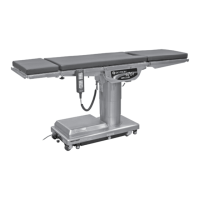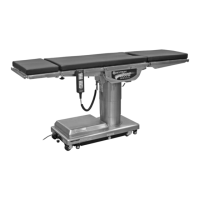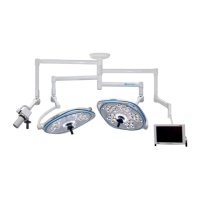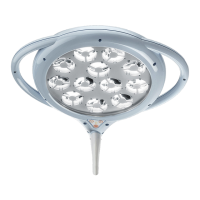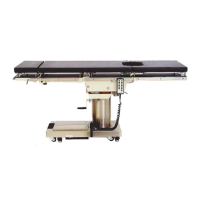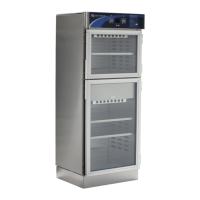Page 8
When activated, the return hydraulic circuit oper-
ates similar to the elevation cylinder return circuit.
Return springs inside the single action brake cylin-
ders retract the brake pads and provide the pres-
sure to return the hydraulic oil back to the reservoir.
The electronic timer operates the return circuit for
approximately 8-10 seconds.
j. Emergency Brake Release
The emergency brake release is simply a manually
operated bypass valve connected in parallel to the
brake cylinders and the oil reservoir. See figure 1-
17. When the valve is opened (turned counter-
clockwise) a return circuit for the brake hydraulic
fluid is opened. The return springs force the pistons
up pushing the hydraulic oil back into the reservoir
and retracting the brake pads.
1. The brakes will release slowly- depending
on how loose the valve is, this could take anywhere
from a few minutes to several hours.
2. None of the table functions will operate
properly if the valve is wide open. All of the
hydraulic fluid from the pump is simply pumped
through the brake bypass circuit because that is
the easiest path for the oil to follow.
k. Flex/Reflex System
The Flex/Reflex system has a mini-valve which
connects the trendelenburg and back section hy-
draulic systems in a series. When FLEX is acti-
vated by the pendant control, the Flex/Reflex mini-
valve opens the oil pressure path to the Reverse
Trendelenburg piston. The return oil path from the
trendelenburg piston is routed through the back
section cylinder to the mini-valve return port. See
figure 1-18.
IMPORTANT
•The emergency brake release valve
must be tightened securely when not in
use.
•If the emergency brake release valve
has been operated, the UNLOCK but-
ton on the pendant control may have to
be pressed before brakes will lock
again.
If the emergency brake release valve is open or
loose, two conditions could occur:
EMERGENCY BRAKE
RELEASE LEVER
Figure 1-17.
Figure 1-18. Flex/Reflex System
TREND
REV. TREND
BACK
DOWN
BACK UP
PLUMBING
TERMINAL
FLEX/REFLEX
MINI-VALVE
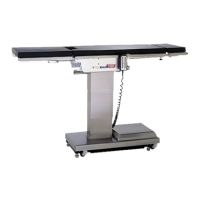
